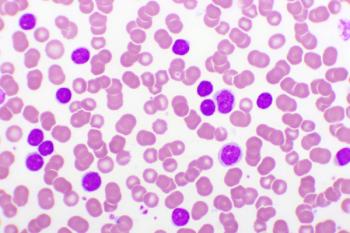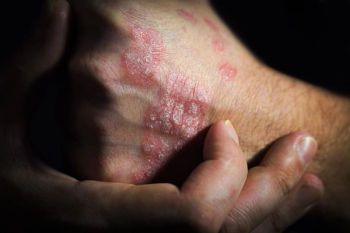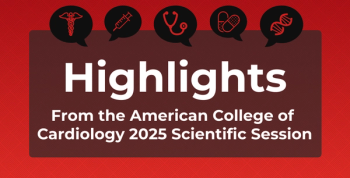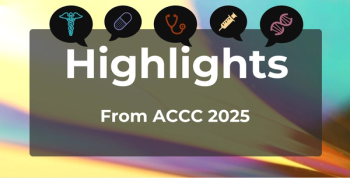
CNS-Directed AAV Gene Therapy: Immune Dynamics and Clinical Implications
Key Takeaways
- CNS-directed AAV gene therapy shows milder immune responses compared to systemic administration, reducing peripheral immune activation and systemic toxicities.
- Direct CNS delivery can bypass preexisting immunity, enabling treatment for patients with anti-AAV antibodies, unlike systemic administration.
A new study reviews how various routes of adeno-associated virus (AAV) gene therapy administration influence local and peripheral immune responses, with a focus on those observed in clinical trials targeting the central nervous system (CNS).
A new review article published in
The study highlights that "AAV therapies injected directly into the immune-specialized brain, such as Upstaza [eladocagene exuparvovec] for AADC [aromatic L-amino acid decarboxylase deficiency], have been characterized by mild immune response profiles and minor adverse events," in contrast to systemic therapies like Zolgensma [onasemnogene abeparvovec] for SMA [
One notable advantage of CNS-directed delivery is its ability to bypass preexisting immunity, a challenge often encountered with systemic AAV administration, allowing certain patients with anti-AAV antibodies to still be candidates for CNS-directed gene therapy. "In particular, an AAV2-GAD therapy in Parkinson's disease patients demonstrated that although 2 patients had anti-AAV2 immunity prior to administration, levels of antibodies did not appear to change post-administration, even without an immunosuppressive regimen," the authors note.
In the GAN trial, participants who were baseline AAV9 seropositive showed higher anti-AAV9 neutralizing antibody titers in the serum and experienced faster vector clearance after CSF-AAV administration, compared with seronegative individuals. In contrast, patients who received gene delivery via IP delivery exhibited minimal changes in B-cell responses, regardless of baseline anti-AAV titers or immunosuppressive treatment.2
Despite this advantage, immune responses, though typically mild, are still observed in CNS-targeted AAV therapies. In an AAV clinical trial for Batten disease, patients developed mild capsid-specific T-cell responses post administration.3 Another study for mucopolysaccharidosis type IIIB (MPS IIIB) found patients experienced circulating CD4 and CD8 T-cell responses, though these did not significantly impact the clinical outcome.4
IV administration with onasemnogene abeparvovec has demonstrated significant clinical benefits, including improved motor function and survival rates in pediatric patients with SMA. However, the higher doses required result in an increased risk of systemic toxicities, including hepatotoxicity and thrombotic microangiopathy.5 The researchers report that with IV delivery, "90% of patients in clinical trials saw post-dosing elevations in liver function tests," with multiple patients experiencing acute liver failure.1
As the use of AAV in treating CNS disorders continues to grow, this review provides a better understanding of the nuances of immune reactions and the advantages of the different targeted CNS delivery systems. The researchers suggest, "Overall, the unique environment of the CNS provides some hurdles and some benefits, but it remains an important target for AAV therapeutic delivery. "
References
- Harkins AL, Ambegaokar PP, Keeler AM. Immune responses to central nervous system directed adeno-associated virus gene therapy: does direct CNS delivery make a difference? Neurotherapeutics. 2024;21(4). doi:10.1016/j.neurot.2024.e00435
- Bharucha-Goebel DX, Todd JJ, Saade D, et al; GAN Trial Team. Intrathecal gene therapy for giant axonal neuropathy. N Engl J Med. 2024;390(12):1092-1104. doi:10.1056/NEJMoa2307952
- Sondhi D, Kaminsky SM, Hackett NR, et al. Slowing late infantile Batten disease by direct brain parenchymal administration of a rh.10 adeno-associated virus expressing CLN2. Sci Transl Med. 2020;12(572):eabb5413. doi:10.1126/scitranslmed.abb5413
- Tardieu M, Zérah M, Gougeon ML, et al. Intracerebral gene therapy in children with mucopolysaccharidosis type IIIB syndrome: an uncontrolled phase 1/2 clinical trial. Lancet Neurol. 2017;16(9):712-720. doi:10.1016/S1474-4422(17)30169-2
- Day JW, Mendell JR, Mercuri E, et al. Clinical trial and postmarketing safety of onasemnogene abeparvovec therapy. Drug Saf. 2021;44(10):1109-1119. doi:10.1007/s40264-021-01107-6
Newsletter
Stay ahead of policy, cost, and value—subscribe to AJMC for expert insights at the intersection of clinical care and health economics.












































